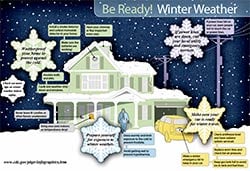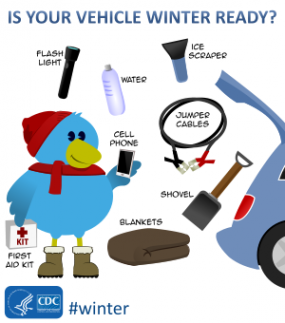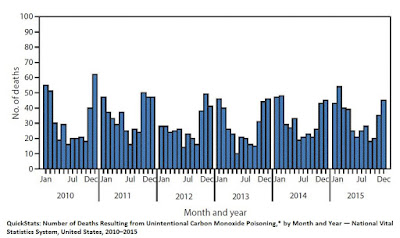
NWS Temperature Forecast - Saturday Dec 24th
#17,180
The 2022-2023 NERC report went on to warn `. . . that a large portion of the North American bulk power system is at risk of having insufficient energy supplies during severe winter weather.'
Although there is still some uncertainty it its forecast, the National Weather Service (NWS) is predicting a major blast of winter weather to blanket 2/3rds of the nation by next weekend, driving temperatures as much as 45 degrees below normal, with some regions seeing heavy snow.
While not as dramatic as a major hurricane, winter storms can impact a much larger area, and inflict every bit as much damage - and loss of life - as their tropical counterparts.
While those who live in northern states are probably already well versed in preparing for winter storms, those who live a bit further south are a little less used to major winter storms.
Some winter preparedness sources include:
Preparing for a Winter Storm
Español (Spanish) | Print
During extremely cold weather or winter storms, staying warm and safe can be a challenge. Winter storms can bring cold temperatures, power failures, loss of communication services, and icy roads. To keep yourself and your loved ones safe, you should know how to prepare your home and your car before a winter storm hits.
On This Page
Make a Plan
Prepare Your Home and Car
Steps to Take Before the Storm Hits
Create an emergency car kit.
It is best to avoid traveling, but if travel is necessary, keep the following in your car:
- Cell phone, portable charger, and extra batteries
- Items to stay warm such as extra hats, coats, mittens, and blankets
- Windshield scraper
- Shovel
- Battery-powered radio with extra batteries
- Flashlight with extra batteries
- Water and snack food
- First aid kit with any necessary medications and a pocket knife
- Tow chains or rope
- Tire chains
- Canned compressed air with sealant for emergency tire repair
- Cat litter or sand to help tires get traction, or road salt to melt ice
- Booster cables with fully charged battery or jumper cables
- Hazard or other reflectors
- Bright colored flag or help signs, emergency distress flag, and/or emergency flares
- While preparing for a winter storm isn't Road maps
- Waterproof matches and a can to melt snow for water
One of the preventable tragedies that occurs every winter is people are killed or injured from Carbon Monoxide poisoning. Faulty furnaces and fireplaces, or improvised heating or cooking schemes (often during power outages), kill hundreds of people each year.
In 2005 CDC’s MMWR released a report called Unintentional Non--Fire-Related Carbon Monoxide Exposures --- United States, 2001—2003 that stated:
During 2001--2003, an estimated 15,200 persons with confirmed or possible non--fire-related CO exposure were treated annually in hospital EDs. In addition, during 2001--2002, an average of 480 persons died annually from non--fire-related CO poisoning. Although males and females were equally likely to visit an ED for CO exposure, males were 2.3 times more likely to die from CO poisoning. Most (64%) of the nonfatal CO exposures occurred in homes. Efforts are needed to educate the public about preventing CO exposure.
A more recent MMWR Quick Stats report (Mar. 2017) illustrates how common CO exposure is in the United States, and highlights the fact that most exposures come during the winter months, when people are heating their homes.
The CDC maintains a web page on Carbon Monoxide safety , which you can access here.
Another common winter hazard are house fires.
A decade ago, in Study: Most Children Sleep Through Fire Alarms we looked at a study that found 87% of children tested under the age of 10 failed to wake up, while those between the ages of 11 and 15 were awakened 56% of the time. Of the 27 children who actually woke up, 61% recognized the fire alarm, and slightly less than half realized they should get out of the house.
Each year more than 800 children die in house fires in the United States (cite Child Fire Casualties).
All reasons why a little extra time spent this week preparing for this winter storm could go a long way towards making the holidays safer, and happier, for all of your loved ones.



